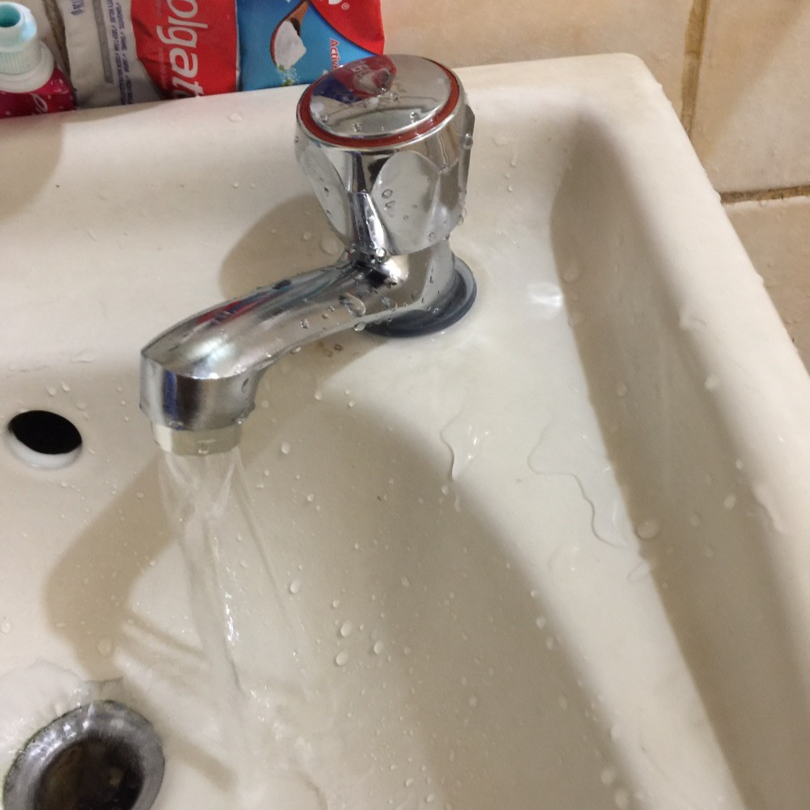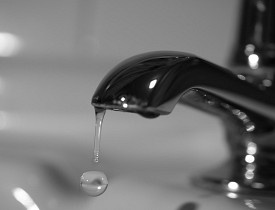What It's Essential to Mend a Dripping Faucet
What It's Essential to Mend a Dripping Faucet
Blog Article
Just how do you actually feel about Why It's Important to Fix Leaky Faucets?

Leaking faucets might appear like a small hassle, yet their effect exceeds simply the annoyance of the audio. From drainage to incurring unneeded financial prices and wellness risks, neglecting a dripping faucet can bring about various repercussions. In this write-up, we'll delve into why it's critical to resolve this usual family concern without delay and successfully.
Wastefulness of Water
Ecological Effect
Dripping faucets add considerably to water wastage. According to the Environmental Protection Agency (EPA), a solitary tap leaking at one drip per secondly can waste greater than 3,000 gallons of water annually. This not only pressures water sources however also influences environments and wildlife dependent on them.
Step-by-Step Overview to Dealing With a Dripping Faucet
Tools Required
Prior to attempting to fix a leaking faucet, gather the necessary devices, including a flexible wrench, screwdrivers, replacement parts (such as washing machines or cartridges), and plumber's tape.
Common Faucet Issues and Their Solutions
Identify the sort of faucet and the certain issue creating the drip. Common troubles include worn-out washers, corroded valve seats, or defective O-rings. Describe producer guidelines or online tutorials for step-by-step support on fixings.
Financial Costs
Enhanced Water Costs
Past the environmental influence, dripping taps can blow up water costs considerably. The collected wastage with time translates into greater energy costs, which can have been avoided with prompt repair services.
Possible Home Damage
Furthermore, prolonged dripping can bring about damage to components and surface areas bordering the tap. Water build-up can trigger staining, deterioration, and also structural problems if left neglected, leading to extra repair service costs.
Wellness Issues
Mold and Mildew Development
The consistent visibility of dampness from a leaking tap produces an optimal environment for mold and mildew and mildew development. These fungi not only endanger interior air quality however additionally position wellness dangers, specifically for individuals with breathing problems or allergies.
Waterborne Illness
Stationary water in dripping faucets can end up being a breeding place for bacteria and various other microorganisms, raising the danger of waterborne diseases. Contaminants such as Legionella germs thrive in stationary water, potentially causing severe ailments when consumed or breathed in.
Do it yourself vs. Specialist Fixing
Benefits and drawbacks of Do It Yourself Repair
While some might attempt to deal with a leaking tap themselves, DIY fixings feature their own set of obstacles. Without proper expertise and tools, DIY efforts can exacerbate the problem or bring about incomplete repair work, lengthening the trouble.
Benefits of Employing a Specialist Plumber
Employing an expert plumber makes certain that the underlying cause of the dripping faucet is dealt with successfully. Plumbers possess the proficiency and equipment to diagnose and repair tap concerns effectively, conserving time and lessening the risk of further damage.
Environmental Responsibility
Specific Payment to Preservation
Taking obligation for repairing dripping taps lines up with broader initiatives toward water conservation and ecological sustainability. Every individual's activities collectively make a significant influence on protecting priceless resources.
Lasting Living Practices
By prioritizing punctual repair work and taking on water-saving routines, people contribute to sustainable living methods that profit both present and future generations.
Safety nets
Regular Maintenance Tips
To avoid trickling faucets, do regular maintenance such as cleaning aerators, checking for leakages, and changing worn-out parts immediately. Additionally, take into consideration installing water-saving devices or upgrading to a lot more effective components.
Relevance of Prompt Repairs
Dealing with dripping faucets as soon as they're discovered avoids further water wastage and potential damage, ultimately saving both water and cash in the future.
Effect On Building Worth
Understanding of Well-Maintained Home
Maintaining a residential or commercial property in good condition, including attending to maintenance concerns like leaking taps, improves its perceived worth and charm among prospective buyers or occupants.
Influence on Resale Value
Properties with well-kept plumbing components, including taps, command greater resale values in the realty market. Addressing dripping taps can add to a positive impact during residential property examinations and negotiations.
Final thought
Attending to a leaking tap surpasses mere comfort; it's an essential action towards saving water, reducing monetary prices, and safeguarding health and wellness and property. Whether with DIY fixings or expert aid, doing something about it to take care of leaking taps is a little yet impactful means to advertise responsible stewardship of resources and contribute to a much healthier, more lasting future.
How to Fix a Dripping or Leaky Faucet
A leaking faucet is one of the most common problems that homeowners encounter, but it being commonplace doesn’t make it any less annoying. The constant drip drip drip of a leaking bathtub faucet, showerhead, or sink tap can disturb your home’s serenity. Left neglected, a dripping faucet can also result in higher water bills and discoloration or mold growth in your sink or plumbing fixtures.
Fortunately, you don’t have to be a trained plumber to know how to stop a dripping faucet. With some basic tools, replacement parts, and a little patience, leaky faucet repair is a breeze. In this article, we’ll explain what causes dripping faucets and how you can fix them.
What Causes a Leaking Faucet?
Kitchen and bathroom faucets come in all manner of designs, but most involve some combination of valves, O-rings, seals, and washers. The O-ring is usually the weakest link, but any one of these pieces can wear down over time. Heat, moisture, temperature fluctuations, minerals, mold, and movement can contribute to warping and corrosion, breaking the watertight seal. This just comes with the territory of being a homeowner. Everything is always subject to wear and tear, and some component parts of your appliances and fixtures need to be replaced on occasion. At least replacement O-rings are cheap!
More rarely, dripping faucets can be a symptom of excessively high water pressure. Were this the case in your home, you would probably notice that the leak is not isolated to one faucet. Water pressure issues are harder to resolve on your own. We recommend contacting a professional plumber if you suspect your water pressure is too high.
How to Fix a Dripping Faucet
Pipe wrench or monkey wrench Allen wrench set Screwdrivers Old towel or rag Shut off the water.
Before you do anything, you need to turn off the water to keep from drenching your kitchen or bathroom. You should find a valve under the sink and against the wall. Once you’ve turned this valve, try turning the faucet on to confirm that the water source has been cut off.
If you can’t locate your local valve for the faucet you’re working on, you can always shut off the water to the house at the main valve. Of course, this will prohibit anyone from using the sinks, showers, or toilets while you’re working on the faucet that’s giving you trouble.
Plug or block the drain.
You’ll be disassembling the faucet and removing some small bits of hardware. Plug the drain with a stopper or rag to avoid the possibility of a small screw falling into your P-trap.
Take apart the faucet assembly.
There are several varieties of kitchen and bathroom faucets, each with its own manner of assembly. For detailed instructions on how to disassemble your faucet, you can refer to the fixture’s manual or contact the manufacturer. If you know whether you have a ball, disc, cartridge, or compression faucet, you can find detailed schematics online.
In general, you need to begin by removing the faucet handles. You might notice a small screw that you’ll need to remove with a screwdriver or Allen wrench. If you don’t see any visible securing hardware, it’s likely hidden under a decorative cap that can be unscrewed or popped off with flathead screwdriver.
Remove each piece methodically, consulting a schematic when necessary. Take notes or arrange the pieces in such a way to make it easier to correctly reassemble the faucet later.
Remove the cartridge.
Once you’ve removed the handles and securing hardware, you should be able to remove the valve cartridge or stem. Some cartridges will slide right out. Other faucet models will require you to loosen a nut with a pipe wrench before you can remove the valve stem.
Examine the exposed hardware.
With the cartridge or stem removed, inspect the component parts. Check the rubber O-rings for wear and tear. Also examine the seat washer for corrosion or other damage. These pieces are usually the responsible parties for a dripping faucet, but it’s worth inspecting the other component parts while you have the faucet disassembled.
Find replacement parts.
Once you’ve identified which faucet component has failed, find an identical replacement. Your local hardware store should have O-rings, seat washers, and other standard components in stock. If you have a luxury or uncommon faucet, you may have to contact the manufacturer for a replacement part.
It’s a good idea to take your old parts with you to the hardware store so you can compare them with the store’s inventory and be sure you’re purchasing the correct replacement.
Reassemble the faucet.
With your new parts in hand, reconstruct the faucet and handles. Don’t be tempted to overtighten screws or nuts. You might think this could create a better seal, but it can instead damage or bend a delicate part of the assembly and create a new problem for you.
Turn on the water and test the faucet.
The only thing left to do is test your work. Unplug the sink, turn the water back on, and try the faucet. Congratulate yourself on a job well done!
https://www.libertyhomeguard.com/how-to-fix-a-dripping-or-leaky-faucet/

Do you enjoy reading up on What Causes Leaky Faucets & How To Fix Them? Give a comment directly below. We would be delighted to hear your ideas about this content. We are looking forward to see you back again later on. Loved our write-up? Please quickly share it. Let somebody else locate it. Thanks for going through it.
Report this page